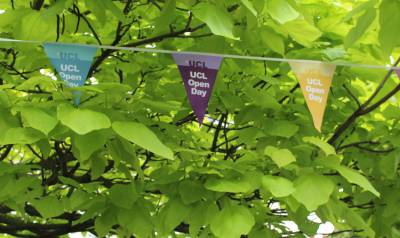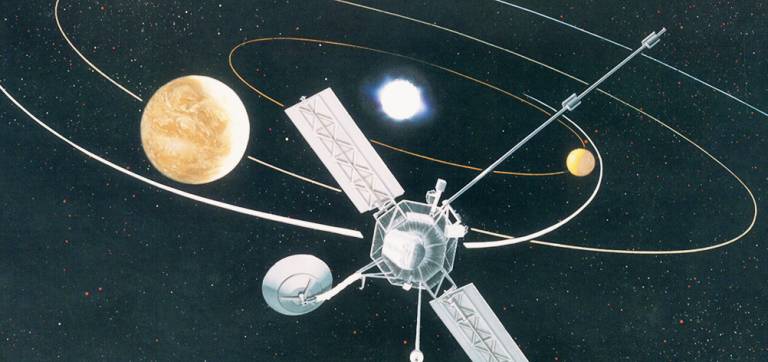Celebrating 150 years of Japan-UCL links
3 July 2013
In 1863, the first Japanese students to leave their
country and study at a Western university came to UCL. At the time,
Japan was a closed society with few links to the outside world, and it
was still illegal for Japanese people to leave their country.Known
as the Choshu Five, these students played a huge role in opening up
Japan to the world after their return, and played important roles in
Japanese history. Among their number were a future prime minister, the man who would found the Japanese railways, and one of the founders of the University of Toyko.
2013 marks a series of celebrations of the Choshu Five by UCL and the Japanese Embassy in the UK, including a ceremony being held at UCL today (3 July).
Today, UCL continues to have close links with Japan, most notably through collaborations between UCL's Mullard Space Science Laboratory and the Japanese space agency, JAXA.
The Hinode spacecraft (Japanese for 'sunrise') was launched in September 2006, and is a joint collaboration between Japan, the US and UK, with UCL a key component of the UK contribution.
The purpose of the space mission is to understand the triggers and source of solar activity. The collaboration between solar physicists in the UK and Japan predates Hinode, and developed into joint space instrumentation in the 1980s with an instrument built for the japanese Yohkoh ('sunbeam') mission. This was the first time there was international collaboration on a japanese solar mission.
Yohkoh was extremely successful and along with Hinode has led to a strong bond between solar physicists in the UK and Japan. Planning is now underway for a future solar mission, currently named Solar-C, to be launched around 2018.
The
Hinode spacecraft includes three instruments on board. One observes the Sun in
extremely high resolution, another, known as the extreme ultraviolet imaging spectrometer (or EIS) acts
as a speed camera on the Sun by measuring spectroscopically the properties of the plasma and the third measures high temperature plasma. The development of the EIS instrument was led by UCL's Mullard Space Science Laboratory, and Louise Harra (professor of solar physics at UCL) is the scientific lead for the instrument.
The science return from the Hinode spacecraft data has been extremely successful - probing questions such as what causes solar flare to trigger? What creates magnetic field on the Sun? What is the source of the solar wind that flows past the Earth and through the solar system?
Notes
Hinode is a Japanese mission developed and launched by ISAS/JAXA, collaborating with NAOJ as a domestic partner, NASA and STFC (UK) as international partners. Scientific operation of the Hinode mission is conducted by the Hinode science team organized at ISAS/JAXA. This team mainly consists of scientists from institutes in the partner countries. Support for the post-launch operation is provided by JAXA and NAOJ (Japan), STFC (U.K.), NASA, ESA, and NSC (Norway).
Related links
- UCL Mullard Space Science Laboratory
- Hinode
- JAXA (Japanese space agency)
- Embassy of Japan in the UK - Choshu Five pages
- UCL Choshu Five press release
High resolution image
This image can be reproduced freely providing the source is credited
Researcher profile
Media contact
Oli Usher
UCL Faculty of Mathematical and Physical Sciences
020 7679 7964
o.usher@ucl.ac.uk
 Close
Close




